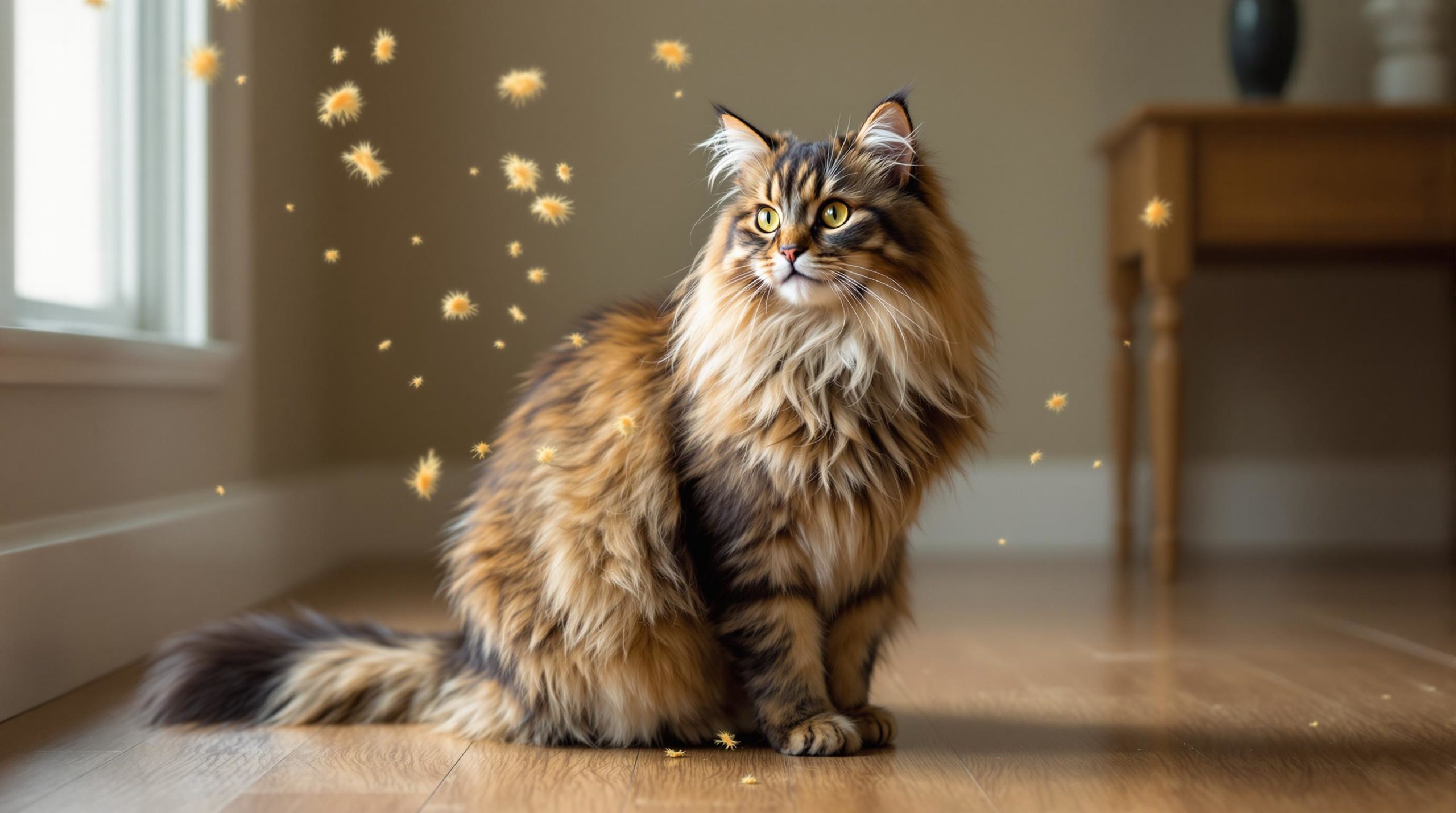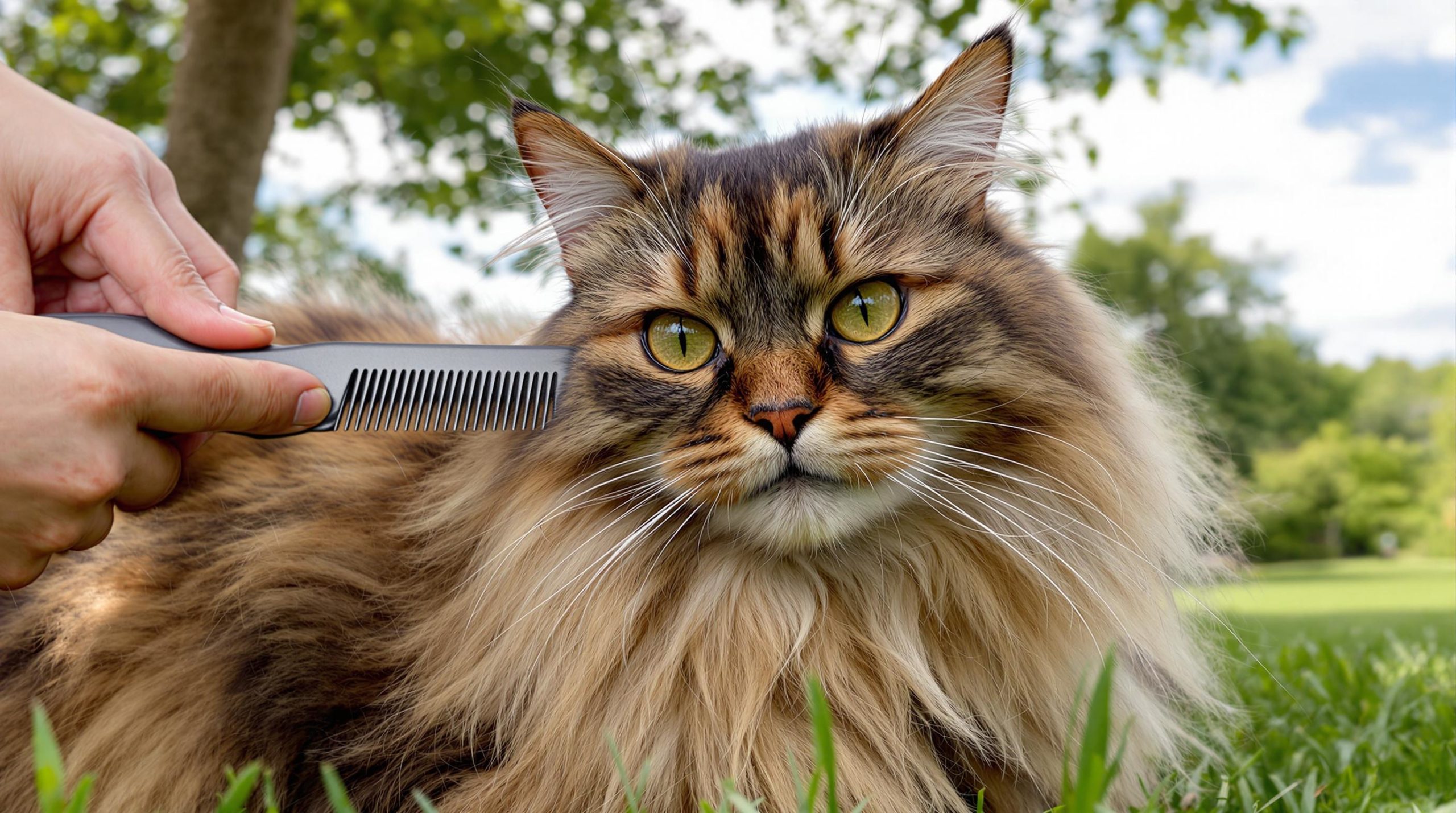Debunking common myths about hypoallergenic Maine Coons

The fascination with Maine Coon cats extends beyond their majestic looks and affectionate nature; many prospective cat owners with allergies often wonder if this beloved breed could be the answer to their challenges. Rumors and claims about Maine Coons being hypoallergenic have only added to the intrigue, creating a maze of pet myths and breed mythbusters to navigate. Understanding allergy awareness in relation to different cat breeds is key for all cat owners, especially those interested in this giant feline wonder. This article explores the truths behind these myths, providing data-driven insights into the allergen levels associated with Maine Coon cats and offering practical guidance for managing pet health in allergy-sensitive households.
Understanding Cat Allergies: The Science Behind Allergic Reactions to Maine Coons
Cat allergies affect approximately 10% of the population worldwide, presenting a significant barrier for many who dream of welcoming a furry companion into their homes. The immune system’s response to specific proteins found in cats – primarily Fel d 1 – triggers symptoms ranging from sneezing and itchy eyes to respiratory difficulties. For Maine Coon cats, distinguishing between fact and fiction about their allergenic potential is paramount, as misconceptions abound.
Allergy awareness begins with comprehending the source and mechanics of common cat allergens. These proteins are predominantly located in saliva, skin cells (dander), and urine. When cats groom themselves, saliva containing Fel d 1 spreads onto their fur. As this saliva dries, Fel d 1 becomes airborne and can adhere to household surfaces. Additionally, the dander flakes shed by cats are miniature allergen carriers that linger indoors, often exacerbating reactions for sensitive individuals.
The Role of Fel d 1 Protein and Its Distribution
The Fel d 1 protein is the chief culprit behind allergic responses to cats, including Maine Coons. Though every cat produces this protein, the quantity varies from individual to individual more than it varies between breeds. For example, a Maine Coon’s long fur acts as a double-edged sword: it can trap these allergens but also release them into the environment when the cat sheds.
- Saliva: Cats’ grooming habits coat their fur with saliva carrying Fel d 1, which dries and spreads allergens.
- Dander: Microscopic skin flakes containing Fel d 1 persist airborne and settled on furniture.
- Urine: In litter areas, Fel d 1 in urine particles can aerosolize, contributing to indoor allergens.
Understanding this biochemical background is crucial in debunking pet myths, especially those tied to Maine Coon’s supposed hypoallergenic status.

Common Symptoms in Sensitive Individuals
- Sneezing: Onset soon after exposure to cats, often repetitive and persistent.
- Itchy Skin and Eyes: Discomfort and redness typically around the face and hands.
- Watery Eyes: Excessive lacrimation accompanied by irritation.
- Respiratory Issues: Ranging from mild wheezing to severe asthma exacerbations.
Myth-Busting: Are Maine Coon Cats Truly Hypoallergenic?
The claim that Maine Coons are hypoallergenic persists widely but does not withstand scientific scrutiny. This myth stems partly from their luscious and voluminous coats, which some believe might ‘trap’ allergens more effectively, resulting in reduced exposure. However, evidence shows that no cat breed is completely free of allergens.
Scientific consensus, confirmed by sources such as the Journal of Allergy and Clinical Immunology, highlights that all cats, including Maine Coons, produce Fel d 1 and can trigger allergic reactions. Notably, the variability in allergen production appears to be more strongly linked to individual cats rather than breed-wide characteristics. For potential cat owners, this means that one Maine Coon might provoke mild reactions while another could cause notable symptoms.
Dispelling the Most Frequent Hypoallergenic Myths
- Myth 1: Maine Coons don’t shed as much, so they cause fewer allergies.
Fact: Maine Coons shed moderately heavily, especially during seasonal changes, releasing significant dander into their surroundings. - Myth 2: Their long fur prevents allergens from spreading.
Fact: While fur can trap allergens temporarily, shedding and grooming spread allergens widely. - Myth 3: Hypoallergenic cats are guaranteed not to cause symptoms.
Fact: Allergy sufferers might tolerate some cats better, but no breed is guaranteed hypoallergenic for everyone.
| Myth | Reality |
|---|---|
| Maine Coons produce less Fel d 1 protein. | Variability exists, but no breed-wide reduction in Fel d 1 is confirmed. |
| Hypoallergenic cats don’t shed allergens. | All cats shed dander and carry allergens on fur regardless of length. |
| Allergy symptoms will disappear over time with exposure. | Some develop tolerance, but allergic reactions often persist or fluctuate. |
Further exploring this topic, the article Maine Coon Allergies Solutions provides in-depth strategies to manage allergies effectively while sharing your home with Maine Coons.
Assessing Maine Coon Physical Traits and Their Impact on Allergens
Maine Coons are renowned for their striking triple-layered coats, comprised of a dense undercoat, thick shaggy fur, and a coarse, water-resistant outer layer. These physical traits contribute to their allure but also influence how allergens circulate in living environments.
Their grooming habits spread saliva—and therefore allergens—across fur that’s more prone to trap dander and loose hair. This can mean that allergens cling not only to the cat but also to furniture, bedding, and clothing, heightening exposure risks. Seasonal periods of heavy shedding intensify this effect, amplifying the allergy stimulus within a home.
How Maine Coon Grooming Influences Allergy Levels
- Brushing: Frequent grooming using quality grooming products reduces loose fur and dander.
- Bathing: Periodic bathing can wash away allergenic saliva and dander residues on the coat.
- Grooming Outdoors: Brushing your Maine Coon outside prevents dispersal of allergens indoors.
Given these factors, it is important for cat owners to integrate regular grooming into their feline care routine. Additionally, selecting appropriate grooming products designed to reduce static and trap loose hairs can make a significant difference.
| Physical Trait | Allergy Impact | Management Tips |
|---|---|---|
| Dense triple coat | Traps dander and allergens | Brush 2–3 times weekly with anti-static brushes |
| Long shedding periods | Increases allergen release in environment | Bath regularly with hypoallergenic shampoos |
| Grooming habits spread saliva allergens | Fel d 1 spreads on fur and possibly into air | Use cat cleaning wipes and groom outdoors |
These strategies are supported by reputable allergy studies and implement practical measures for managing pet health in households prone to allergies.

Practical Strategies for Allergy Management While Enjoying Maine Coon Companionship
Living harmoniously with Maine Coons despite allergies is achievable through a balanced combination of environmental control, proper grooming, and personal care. From allergen filtration to strategic home zoning, the following measures have proven effective in reducing allergen exposure.
- HEPA Filters: Installing high-efficiency particulate air filters traps airborne allergens in key living spaces.
- Cleaning Regimens: Regular vacuuming with HEPA-equipped vacuums and dusting surfaces reduces allergen accumulation.
- Cat-Free Zones: Restrict cats from bedrooms to minimize nighttime allergen exposure.
- Hand Hygiene: Washing hands after contact with cats reduces allergen transfer to eyes and nose.
- Medication: Antihistamines and corticosteroid nasal sprays can relieve symptoms, with immunotherapy as a long-term option.
- Protective Measures: Wearing gloves when gardening or cleaning litter boxes helps avoid allergen contact.
- Covering Furniture: Washable throws on sofas and beds can trap allergens and are easier to clean regularly.
Many Maine Coon cat owners have found success in reducing allergic reactions by combining these approaches. The key is consistent implementation and adjusting based on individual sensitivity.
| Management Strategy | Expected Benefit | Recommended Frequency |
|---|---|---|
| Regular Grooming with Quality Brushes | Reduces shedding and dander in home | 2–3 times weekly |
| HEPA Air Purifiers in Living Areas | Traps airborne allergens for cleaner air | Continuous use |
| Furniture Throw Covers | Easier allergen removal | Weekly washing |
| Hand Washing After Cat Contact | Prevent allergen transfer | After every interaction |
Check further details on managing pet allergies at the Maine Coon Allergies Solutions page, which offers advice tailored for this particular breed.

Preparing Prospective Cat Owners: Allergy Testing and Breed Selection
Before inviting a Maine Coon cat into your life, especially if there is a history of cat allergies in the household, comprehensive allergy testing and preliminarily exposure to the breed are vital steps. These precautions help mitigate the risk of unexpected severe allergic reactions after adoption.
Understanding Allergy Testing Methods
Common diagnostic procedures include:
- Skin Prick Test: Allergens such as Fel d 1 are introduced to the skin to observe localized reactions, providing quick and tangible results.
- Blood Tests (RAST or ImmunoCAP): Measures the level of allergen-specific antibodies in the bloodstream, beneficial for individuals who cannot undergo skin testing.
While these tests are reliable, actual allergic reactions to a Maine Coon may depend on individual cats’ allergenic variability and other factors such as home environment and immune system sensitivity.
Practical Exposure and Trial
Spending quality time with Maine Coons before adoption can help prospective owners gauge their tolerance. Multiple visits over days or weeks provide more accurate insight than a single meeting. This experiential approach aids in setting realistic expectations regarding allergy management.
| Test Type | Purpose | Advantages |
|---|---|---|
| Skin Prick Test | Detect immediate allergic response | Rapid, minimally invasive, widely used |
| Blood Test (RAST/ImmunoCAP) | Measures allergen-specific IgE antibodies | Useful when skin test contraindicated |
Choosing the right match and taking informed actions can safeguard both pet health and owner wellbeing, a cornerstone principle highlighted on the Maine Coons Blue Eyes information hub.
Summary FAQs for Maine Coon Allergy Awareness
- Are Maine Coons completely hypoallergenic?
No cat breed is completely hypoallergenic. Maine Coons produce allergenic Fel d 1 protein like other cats. - Can Maine Coon allergens be managed effectively?
Yes, through regular grooming, environmental controls such as HEPA filters, and medication under doctor supervision. - Do long-haired cats produce more allergens?
Allergic protein production is not strongly linked to hair length, though longer fur can trap more allergens temporarily. - Is allergy testing necessary before adopting a Maine Coon?
Testing helps identify sensitivity levels and prepares owners for management strategies but does not guarantee symptom elimination. - What grooming products help reduce allergens in Maine Coons?
Anti-static brushes, hypoallergenic shampoos, and cat cleaning wipes are ideal tools to minimize dander and saliva allergens.